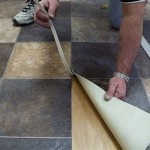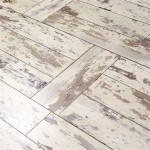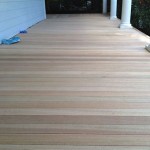Trailer Hardwood Flooring: Durability, Aesthetics, and Installation Considerations
Hardwood flooring, traditionally associated with residential homes, is increasingly being considered as a viable option for trailer homes and recreational vehicles (RVs). While the benefits of hardwood – its aesthetic appeal and potential for increased resale value – are attractive, careful consideration must be given to the unique challenges presented by the mobile nature and confined spaces of trailers.
This article aims to provide a comprehensive overview of hardwood flooring in trailers, covering material selection, installation techniques, maintenance considerations, and the inherent advantages and disadvantages of choosing hardwood over alternative flooring options like carpet, vinyl, or laminate. The goal is to equip trailer owners with the knowledge necessary to make an informed decision about whether hardwood flooring is a suitable investment for their mobile living space.
Material Selection: Navigating Weight, Stability, and Cost
The selection of hardwood flooring for a trailer is a more nuanced process than choosing flooring for a stationary home. Weight is a critical factor, as adding excessive weight can negatively impact fuel efficiency and potentially compromise the structural integrity of the trailer. Solid hardwood, while highly durable and aesthetically pleasing, is generally heavier than engineered hardwood. This inherent weight difference often makes engineered hardwood the preferred choice for trailer applications.
Engineered hardwood consists of a thin veneer of real hardwood bonded to a core of plywood or fiberboard. This construction method offers several advantages. Firstly, it significantly reduces the overall weight compared to solid hardwood. Secondly, the multi-layered construction provides increased stability, making it less susceptible to warping or cupping due to fluctuations in temperature and humidity – conditions frequently encountered in trailers, especially those used for travel.
The species of hardwood also plays a crucial role in durability and appearance. Harder wood species, such as oak, maple, and hickory, are more resistant to scratches and dents, making them ideal for high-traffic areas. Softer woods, like pine or cherry, are more susceptible to damage but offer a unique aesthetic appeal. The choice ultimately depends on the trailer owner's priorities and lifestyle. Furthermore, the finish applied to the hardwood provides a protective layer against wear and moisture. Polyurethane finishes are commonly used for their durability and ease of maintenance.
Cost is another significant factor. Solid hardwood is typically more expensive than engineered hardwood. Within engineered hardwood options, the cost varies depending on the thickness of the veneer, the quality of the core material, and the species of hardwood used. It is essential to balance budget constraints with the desired durability and aesthetic qualities to make a well-informed decision.
Finally, consider the method of installation. Some engineered hardwood flooring products are designed as "click-lock" or "floating" floors. These types of floors are typically easier to install than traditional nail-down hardwood, reducing labor costs and installation time. However, ensure the subfloor is level and properly prepared before installing any type of hardwood flooring.
Installation Techniques: Addressing Space Constraints and Subfloor Preparation
Installing hardwood flooring in a trailer presents unique challenges due to limited space and the often-unconventional dimensions of the interior. Precise measurements and careful planning are paramount to minimize waste and ensure a professional-looking result. It is advisable to create a detailed floor plan indicating the placement of each plank, taking into account any obstacles such as wheel wells, furniture supports, and plumbing fixtures.
Subfloor preparation is arguably the most critical step in the installation process. The subfloor must be clean, dry, and level. Any imperfections or unevenness can lead to uneven flooring, squeaks, and potential damage to the hardwood over time. Existing flooring, such as carpet or vinyl, must be removed completely. The subfloor should then be inspected for any signs of damage or moisture. If necessary, repairs should be made before proceeding.
For uneven subfloors, a self-leveling compound can be used to create a smooth and even surface. This is particularly important when installing click-lock or floating hardwood floors, as they are more sensitive to imperfections in the subfloor. A moisture barrier should also be installed to protect the hardwood from moisture damage. This is especially important in trailers, where condensation can be a problem.
The installation method depends on the type of hardwood flooring chosen. Nail-down hardwood requires specialized tools and expertise and is generally best left to professional installers. Click-lock or floating hardwood floors, on the other hand, can be installed by experienced DIYers. However, even with these easier-to-install options, it is essential to follow the manufacturer's instructions carefully. Pay close attention to expansion gaps, which are necessary to allow the hardwood to expand and contract with changes in temperature and humidity. These gaps should be concealed with baseboards or quarter-round molding.
When cutting hardwood planks to fit around obstacles, use a sharp saw and appropriate safety gear. Precise cuts are crucial for a seamless and professional-looking installation. Consider using a jigsaw for curved cuts and a miter saw for angled cuts. After installation, inspect the flooring for any gaps or imperfections. Fill any small gaps with wood filler and touch up any scratches or blemishes with matching stain.
Maintenance and Long-Term Care: Protecting Your Investment
Maintaining hardwood flooring in a trailer requires a consistent cleaning routine to prevent dirt and grime from accumulating and damaging the finish. Regularly sweeping or vacuuming with a soft brush attachment is essential to remove loose debris. Avoid using vacuum cleaners with beater bars, as they can scratch the surface of the hardwood. Damp mopping with a pH-neutral hardwood floor cleaner can be used to remove stubborn dirt and stains. However, it is crucial to avoid over-wetting the floor, as excess moisture can seep into the seams and cause warping or swelling. Always wring out the mop thoroughly before applying it to the floor.
Protective measures can also help to extend the life of hardwood flooring. Use rugs or mats in high-traffic areas, such as entryways and hallways, to protect the floor from scratches and wear. Place felt pads under furniture legs to prevent them from scratching the hardwood. Avoid wearing shoes with sharp heels or cleats inside the trailer. Consider using window coverings to block out direct sunlight, which can fade the finish of the hardwood over time.
Addressing spills promptly is essential to prevent staining. Blot up any spills immediately with a clean, dry cloth. Avoid using harsh chemicals or abrasive cleaners, as they can damage the finish. For stubborn stains, consult the manufacturer's recommendations or consult a professional hardwood flooring cleaner. Regularly inspect the flooring for any signs of damage, such as scratches, dents, or water damage. Repair any damage promptly to prevent it from worsening. Small scratches can often be repaired with a touch-up kit. Larger dents or gouges may require professional repair.
In trailers with pets, extra care must be taken to protect the hardwood flooring. Trim pets' nails regularly to prevent them from scratching the floor. Clean up any accidents immediately to prevent staining or odor absorption. Consider using pet-friendly hardwood floor cleaners. Depending on usage, hardwood floors in trailers might need to be refinished every few years. This involves sanding down the existing finish and applying a new coat of sealant. Refinishing can restore the floor to its original beauty and extend its lifespan.
Furthermore, controlling the humidity levels inside the trailer is vital. Excessive humidity can cause the hardwood to swell, while low humidity can cause it to shrink and crack. Using a dehumidifier or humidifier can help to maintain a stable humidity level. This is especially important in climates with extreme temperature swings. Regular maintenance and preventative measures will help ensure that hardwood flooring in a trailer remains beautiful and durable for years to come.
Ultimately, choosing hardwood flooring for a trailer is a decision that requires careful consideration of factors such as weight, durability, installation requirements, and maintenance needs. By carefully weighing these factors and making informed choices, trailer owners can enjoy the aesthetic and practical benefits of hardwood flooring in their mobile living space.

Stoughton Trailers Havco Dry Van Trailer Flooring

Protecting Both Sides Of The Trailer Floor Is Best Way To Combat Corrosion And Maximize Service Life It S One Company Mission Solve This Industry Problem

Semi Trailer Wood Floor Utility Keystone S

Semi Trailer Wood Flooring Decking For Commercial Vehicles

Semi Trailer Wood Floor Utility Keystone S

Trailer Decking Apitong Keruing Truck Decks 100 Legally Logged

Reclaimed Trailer Flooring And Cargo Planks Yci Hardwood

Semi Trailer Wood Floor Replacement Aftermarket Parts Kit

Best Trailer Wood Decking Options Trailerdecking Com

Best Trailer Wood Decking Options Trailerdecking Com
Related Posts








